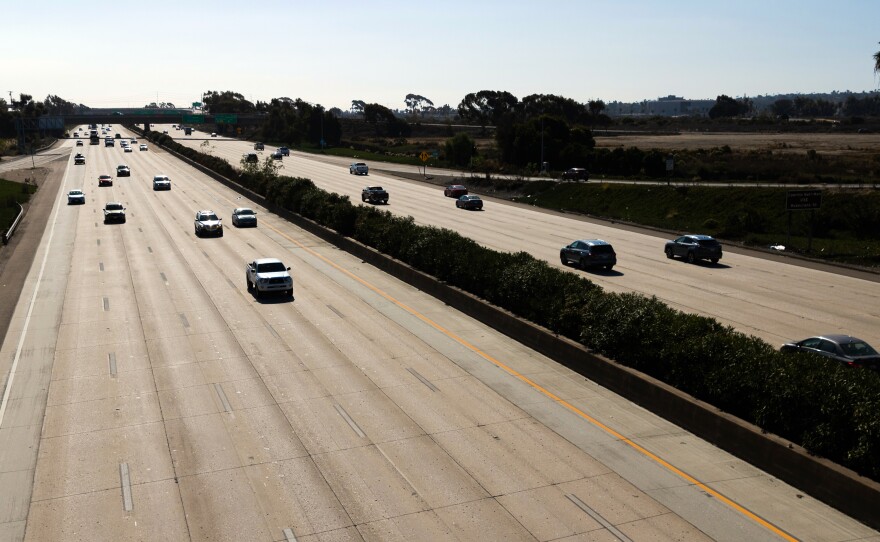Traffic volume in the San Diego region was at its lowest point this year in April, and volume remains relatively low and speeds higher compared to 2019, according to an interactive map released Tuesday by the San Diego Association of Governments.
The SANDAG Highway Hot Spots & Volumes Tracker measures weekday month-by-month vehicle miles traveled on local highways, including traffic speeds and average daily traffic volumes — which, this year, reflect fewer cars on the road due to the pandemic.
The data available on the tracker includes March through October 2020, and users can also compare current data to the same time in 2019. The SANDAG tracker is updated monthly.
"This new tool is intended to be a resource to assist community members and local leaders with current traffic data to make regional decisions," said Cynthia Burke, SANDAG director of research and program management. "The Highway Hot Spots & Volume Tracker has shown us that the greatest drop in traffic volumes this year were seen in April when we were down 44%, compared to the same time last year."
The SANDAG tracker also shows that between June and October, traffic volumes hovered between 15% and 16% lower than compared to 2019.
“This most recent data that we have for the month of October. It was down 19 percent. So before we were down about half the number of people driving on the freeways and the number of vehicle miles traveled, now we’re down about one-fifth," Burke said.
The number of vehicle miles traveled on eight local highways reflected that same trend. Data shows that in October, traffic remained lowest on State Route 163, which was down 29% compared to October 2019, and that State Route 78 and Interstate 805 were the closest to last year's figures at this time — down 11% and 13%, respectively.
Burke said SANDAG is potentially looking to "expand this and do different phases with this dashboard" by adding other hotspot locations, updating border crossing information and including weekend traffic data.
The tracker currently offers multiple ways to interact with and explore the data, such as filtering to focus on points of interest and selecting data points in the chart to make simultaneous comparisons.
SANDAG picked several San Diego region hotspots of particular interest, including Southbound Interstate 15 at Deer Springs Road, Southbound Interstate 5 at Manchester Avenue, Northbound I-805 at Governor Drive and Westbound State Route 52 at Mast Boulevard.
Speed data at each of the hot spots during morning peak periods revealed that in October, speeds were up an average of about 6 mph compared to March.
The largest increases were seen at Northbound I-805 at I-15 — 13.7 mph faster in October — and Westbound Interstate 8 at Waring Road — 10.5 mph faster. The average speeds at the 10 hotspot locations on average was 57.5 mph in March, varied between 64.2 and 65.6 April through September and was down to 63.6 in October.
Burke said she is unsure whether traffic volumes and speeds will fully return to what was previously normal for San Diego highways as telework and new modes of transit may become more popular in the region.
The interactive data map will continue to be updated monthly.









